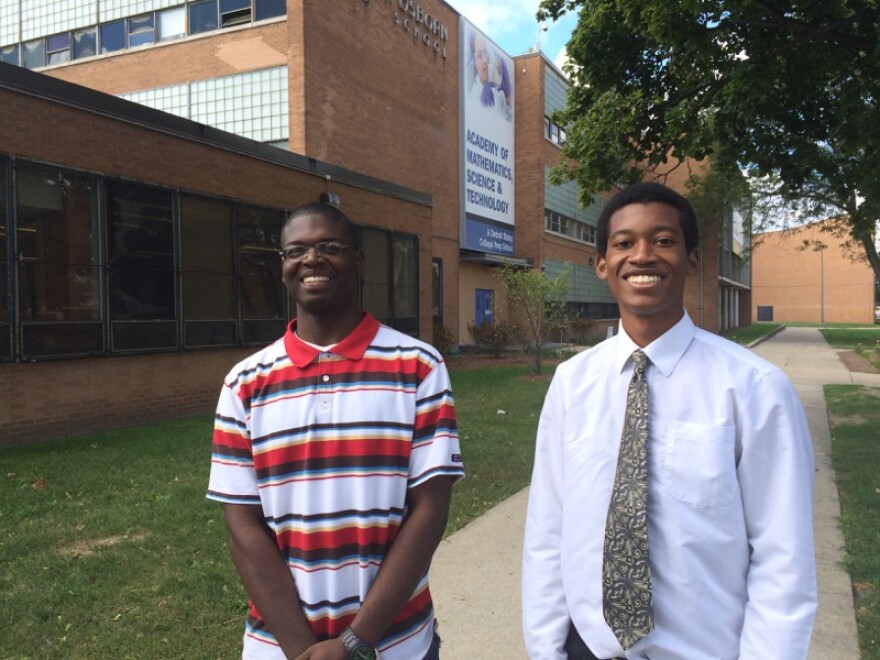Of all the roadblocks between urban communities and economic development, a failing public school is one of the hardest problems to fix.
The Osborn neighborhood in northeast Detroit has been living with this struggle for some time.
Now, thanks to a surge of support from businesses and nonprofits, Osborn has managed to turn a corner –and the instrument guiding that turnaround has been the neighborhood’s high school.
At one point four years ago Osborn had the dubious distinction of being Detroit’s deadliest neighborhood. In two summer months more than three dozen people were shot. Eight of them died.
At Osborn High School, graduation rates were at 50% and falling. Daily attendance and test scores were at an all-time low with no signs of improvement.
“Oh man, it was a really nasty stereotype,” says Ronald Norwood. Norwood works for the Neighborhood Service Organization’s youth initiatives project. He was also a student at Osborn during this time.
Struggling under the weight of the recession, population loss, and blight, the community decided to take stock.
What they did have were strong civic groups, such as the Osborn Neighborhood Association. They also had young people. Kids, who if given the right support, could be a catalyst for change.
“It was sort of a challenge overcoming this stigma that I could be smart,” Norwood says, “that I could be this person that makes that change that I see in this community, that it was me they had been waiting on and not someone else.”
Norwood says the big change happened when foundations got involved. Major philanthropy groups like Kresge, Kellogg and Skillman. In partnership with local groups, they directed resources toward all of the critical things that happen outside of schools, but make all the difference in success in the classroom –things like safe routes to school, summer jobs, and mentorship.
This past summer, senior Dante Fleming landed his first summer job, working right in Osborn.
“This summer I worked with General Motors as an intern,” Fleming says.
“They had us plan a community project and they had us actually execute the work ourselves … we didn’t know that at the beginning.”
In addition to help from GM, the non-profit Life Remodeled also pitched in about $5 million. The group boarded up 500 vacant homes. It also paid for a new roof on the school as well as upgrades to the library and gym.
On the first day of class, Fleming says things felt different.
“The first week of school was excellent. The flow was different, the energy, coming in as a senior. Everything just seemed so new and refreshing.”
“New and refreshing” are not words typically associated with Osborn, a school that was once looked at as a “dropout factory.”
Fleming hopes to attend Central Michigan University after he graduates.
And while his story is just one among tens of thousands, it shows the critical role young people can play in economic development.
“I think Osborn is kind of unique in its focus on very simple pragmatic development, but economic development that is feasible and within reach of the residents there,” says Professor Larry Gant. Gant teaches social work at the University of Michigan.

He points out that progress in neighborhoods like Osborn may not grab the same headlines as other Detroit comeback stories, but when stitched together across the region, they amount to the biggest challenge for a city trying to shed its old bankrupt image.
“Osborn may not be downtown, but Osborn is the key to Detroit’s success,” says community organizer Frank McGhee. McGhee directs the Youth Initiatives Project for the Neighborhood Service Organization.
Standing in front of Osborn High School, he points out several signs of progress – things like regular bus service up and down 7 Mile Road, new businesses opening, and working street lights. All this started with Osborn High School.
“We can define success by graduation rates. It’s about a cohesion, opportunity, and more importantly, it’s about education,” McGhee says.
If you have a working school, McGhee says, a neighborhood can turn itself around. And what Osborn – and lots of Detroit neighborhoods – are looking for is pretty modest. They want property values to go up. A growing tax base to pay for services. And jobs.



